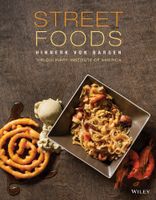Advertisement
Sautéing, Stir-Frying
Appears in
By Hinnerk von Bargen and Culinary Institute of America
Published 2015
Sautéing cooks naturally tender cuts of meat, fish, or seafood rapidly in a small amount of fat in a hot skillet. Traditionally, the pan drippings are deglazed with a flavorful liquid for an accompanying sauce. In an effort to create an appealing, flavorful exterior, meat, fish, and seafood are seared as one of the initial steps. The temperature required for searing varies. White meat is commonly exposed to a lower temperature than red meat to achieve a golden brown but not too dark exterior. Thin cuts are seared hotter than thick steaks to guarantee appropriate browning once they reached the desired doneness. And last, skin-on poultry or fish is seared, skin side down, over relatively low heat to ensure a very crispy skin and tender flesh. Duck breast, with its fatty skin, is seared at a very low heat to render as much of the fat as possible and ensure crispiness. Searing, contrary to popular belief, does not seal in the meat’s juices; the objective of searing is to achieve an attractive exterior color and texture with the resulting strong flavor, as well as to generate pan drippings as a base for the sauce.



